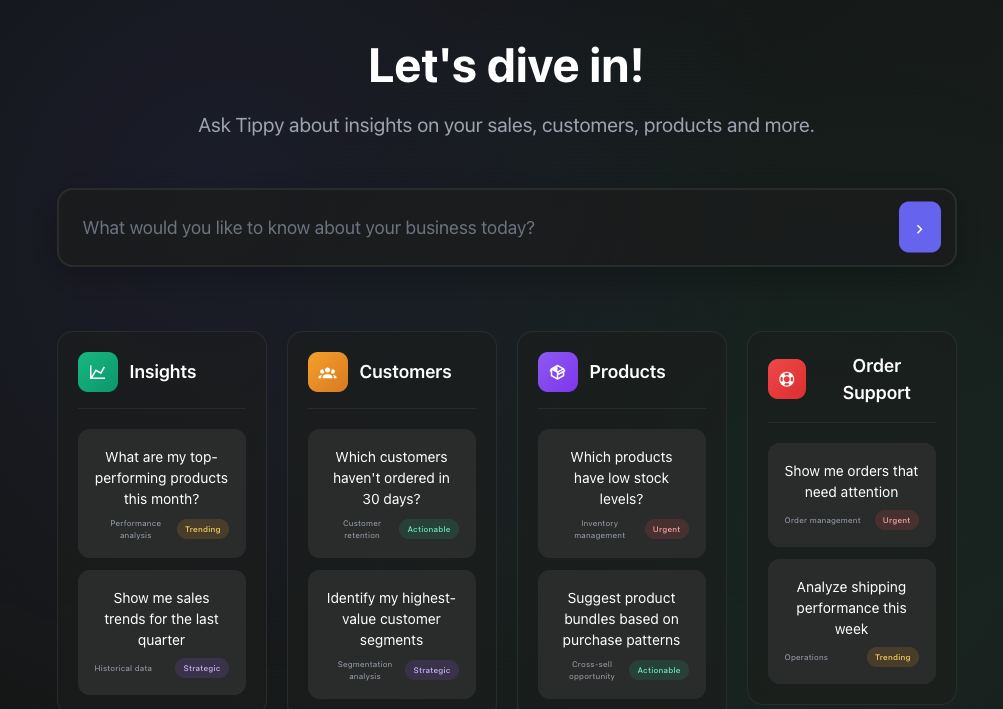How to develop a B2B eCommerce website? Step-by-step guide
Are you selling in bulk? Can your retailers find you online?
Table of Contents
Your answer should be ‘yes’ to both if you would like to run a successful wholesale business. Are you just considering getting started? Then you should read this article first.
Once you made the decision to get started with your own B2B eCommerce website development this guide will show you the way.
What is a B2B eCommerce website?
In a nutshell, eCommerce websites are digital shopfronts, that customers can browse through and find information about the listed products. It is also a space where they can place orders. All these steps require internet and a website created by the seller. This website can be created as an addition to a physical store or warehouse, or as a standalone shopping portal.
The shift towards B2B eCommerce websites
Just a few years ago, we all thought that digitalization reaches companies operating in the B2B environment only from the manufacturing and logistics side. We can understand why salespeople wanted to stick to their traditional way of doing business. After all, it is much easier to be seller-oriented instead of customer-oriented. This explains why the change we saw in B2C online shopping has been delayed in B2B. Yet, wholesale customers no longer have the time or the interest in purchasing goods the ‘old’ way. Not even if it is part of their job to place the orders. In most industries, the shift toward shopping through digital web stores has already taken place, and based on the current trends, there is no turning back. Not in B2C nor in B2B!
Let the numbers talk for themselves:
- B2B buyers find their desired products online 89% of the time.
- 73% of B2B buyers google for new products
- 76% of the B2B buyers find the website design the most influential factor in the final buying decision
- The average B2B wholesale buyer conversion rate is 10%, while B2C is only 3%
Thus, B2B eCommerce website development is more important than ever. You can find the ruling 5 trends of 2022 here.
What is the benefit of developing an eCommerce website?

As the statistics show, there are many benefits of shifting to an eCommerce platform. Also, if you are selling b2b. Either way, your customer will google for products, and they will be approached by other brands digitally. So once they are in front of their computers, why shouldn’t they place the order right away? To allow them to do so, you need to develop an eCommerce website.
Make the most out of trending products
We all follow trends! We all have a higher desire to buy goods that are popular from the vendors that are known. Of course, in B2B there are many other factors influencing the final buying decision, besides branding and trends. However, to stay safe and to make the most sales possible, you should always feature trending products first. And what better way to present these “new” and trendy goods than using a B2B eCommerce website.
Attack an untapped market
A blue ocean is always nicer than a red one! Of course, there are a lot of challenges in tackling a market as the first player. And you should definitely consider these before you decide to jump on the opportunity. However, once you do, you should secure your spot on the bandwagon digitally just as much as offline. Even if you are supplying a niche demand, your customers will be always people who will be influenced by the way you’re selling. They will also look for answers and solutions online.
eCommerce isn’t the cherry on the cake, it’s the new cake
Jean Paul Ago – CEO L’Oreal
eCommerce for B2C vs eCommerce for B2B
A B2B eCommerce page is not significantly different compared to a B2C one. The source of the major differences can be traced back to the purchasing flow of the customers, which mainly depends on the industry and the nature of the product, and not the type of sales.
When you are building the skeleton of your eCommerce website, you should always have your customers’ journey in mind. You should always think through which pages and categories need to be included based on the steps the buyer will take before pressing the payment bottom.
This might be the hardest part of a B2B eCommerce website development. You need to know your customers and build use cases based on personas and their requirements. Once you have this knowledge, you can start structuring your eCommerce page in the way your customer thinks and behaves. This step is just as essential in B2B as it is in B2C.
In B2B, there are also more added services than just goods, which can cause intrigue. The article from Usability Geek can be a good place for getting inspired.
Protected login
Some information isn’t disclosed publicly in the B2B sales environment. This is due to the fact that wholesalers are having special and individual deals with their retailers and wish to keep these agreements exclusive. To keep it this way, most B2B eCommerce websites have their customized log-in page. Securing that only the ones with permission can access the products or see the details. This way, only people with the login details can enter the digital shopfront and see the product information and prices shared with them.
Pricing/ availability
As just mentioned, in B2B there is non-disclosed information around the goods, depending on who is buying. Most wholesalers are working with flexible or fully customized prices. There are also products that are available only for specific customers. This requires a case-by-case product and price display. This is a fundamental difference compared to B2C, which must be supported once you develop your B2B eCommerce website.
5 B2B eCommerce website must-haves
1, Right server/ platform

Like any website, a B2B eCommerce website development also starts with choosing the most suitable platform to build the page on. There are many platforms supporting different needs, including special features. Usually, it all depends on the budget, and what is or isn’t covered. The more customisations and automation you can include usually the better. But supported integrations are for sure a criterion you can’t neglect.
There are big players and smaller companies offering different packages. You will need to pick 2-3 crucial features to have and one or two more that would be nice to have. Then compare a few offers before you make the final decision. It is very important not to rush into implementing any solution before any careful consideration.
Normally, once the platform is chosen and the website is built, it will be more difficult to shift to another server.
Having the right developer team

Simultaneously with finding the right platform, you will also have to set up a team that will work on the B2B eCommerce website development. As the first step in this process, you will need to align IT and general business goals, so everyone will work towards the same milestones. The web developers you hire or relocate need to meet the technical requirements of developing a more complex website. If this is out of your budget, then you can either hire an agency that will take care of the ‘dirty’ work. Or just use a plug-and-play solution. All three options have their ups and downs, and it is only you who can decide which makes the most sense in your business environment and stage.
Find the right b2b theme/design

To refer to the statistics listed at the beginning of the article. The visual identity of your page will have a big weight. Your customers will be influenced by it and will behave differently accordingly. Your B2B eCommerce needs to resonate with your homepage and offline business identity. One can lead to the other, but in the end, they must send the same message and create the same impression. When we are talking about theme and design, it goes deeper than finding the right font and colour on your page. It is also about the structure you build, the product categories you choose and the pages you link together.
Customisation

One of the main points of having your own webshop is that you can individualise the shopfront. Your products deserve all the attention that you can provide, which is easier through your own page. Not like in a marketplace, where your brand is mixed with others’ products.
When you choose to develop your own B2B eCommerce page, the customisations you can include become endless. Even with plug-in solutions, you have a wide range of customisation options. There are a few segments we find more important in general.
Password-protected login page
This is the first thing your customers will see. Usually, it is a simple page asking for the login details. However, this already determines the expectations of your customer. To keep the image of exclusivity and to track customer behaviour, you should always have a login based B2B webshop.
Pricing
As mentioned before, most wholesalers work with individual or flexible pricing. Therefore, your webshop should also support this. After the retailer login, they will see different products available, offered at different prices. This is of course on purpose, and you should be able to navigate and adjust these settings. Implementing a feature supporting this will save hours of your work and will make it easier to serve different customers.
Minimum order
Depending on your bottom line strategy and shipping criteria it is always a smart move to request a minimum order amount before accepting any incoming queries. After all, the point of running a wholesale business is to buy and sell in bigger quantities. For that reason, one of the essential features is to set different order amounts depending on products, retailers, or shipping agreements.
Quote management
Another reason behind the customized login and pricing can also be that you ask your customers to send a quote before they even gain access to the product details, or before you confirm any product order. If this is the way you work, then your B2B shopfront needs to support quote management. So you and the buyer can send purchase proposals and quotes to each other easily.
Reordering
You know that you did a good job with your B2B eCommerce website development when your customers are returning and placing an order on your page more than once. This is an ideal stage that is more likely to happen in B2B than in B2C. To support your regular buyers, you should include a reordering or quick ordering feature on your website. With the help of this, the buyer can easily duplicate the same order or see the products they usually order.
Integrated accounting
We mentioned integrations before. Once the different systems and pages start to communicate with each other and send real-time data to each other, you can start optimizing. Accounting is one of the many integrations you can and should have.
Maintenance

You might think that your website development ends once the page is launched. Well, that is far away from the truth. It will be less work to maintain your eCommerce than it was to develop it, but it will be a continuous job. There are regular updates that need to be published. You will also receive a lot of feedback and see your customers interact in different ways as expected. So you will need to optimize your website based on these observations.
Security

Developing a webpage that includes a lot of data tracking and connecting, comes with certain security issues. Besides protecting your users and your own business, you will need different certificates to secure your website in general. This included using SSL certificates, setting up permission rules, and providing authentications. The more integrations you have and the more complex your eCommerce website is, the more concerned you need to be when it comes to page security.
Main challenges of developing a B2B eCommerce website
Budget and resources
As we discussed already, there are many paths that you can take when it comes to developing your B2B eCommerce website. You can hire your own developers you can ask an agency to take care of it, or you can decide to choose a plug-in solution. Either way, there will be expenses. You will need to allocate a different amount of resources depending on the strategy you think fits your business the best.
Getting your own developers might be the most expensive solution. And depending on your needs and current webpage, it can also be the most time-consuming as well.
An agency won’t be much cheaper IF any. The bright side of it is that you can have a fixed deal covering risks and delays.
The easiest way is to have a monthly subscription with an eCommerce platform that you can personalize. In this case, you will only need to allocate a few hours to the implementation and onboarding. The rest will be taken care of by professionals specializing in the technical processes.
Watch out for the competition
As said, digitalised shopfronts are a growing trend in b2b now. Meaning that you have to keep a close eye on your defined competitors. The earlier you decide to develop your own B2B eCommerce website, the biggest advantage you will have. If others already have their web solutions in your domain, don’t worry. It is never too late to step up your game and close the gap between your vendor and the competition. There are endless tools you can use in order to identify the competition and understand your position in the market.
Testing before launching
Once you collected the needed customer insides, you choose the platform and the features you need. Your team is on board and your dream website is built. You would think you are ready to launch it. Almost, but not quite yet!
The last and most important step is to test your eCommerce website. This is important, so you can see the website from the customer’s point of view and adjust things accordingly. There will be bugs you need to fix, broken links you need to remove, spelling mistakes, and some user experience adjustments. Among many aspects, you need to optimize your page to represent user-friendliness. The website must be compatible with all devices, and visitors need to be able to navigate freely.
When all this is done, your B2B eCommerce website development is over – you are ready to launch!

There will be smaller tasks and updates along the way, but the hard part is normally over. Do you need inspiration? This post can help you with getting started.
Conclusion
We concluded many practices and things that you need to follow before and during your B2B eCommerce website development. There are many other steps that can be added, all depending on your needs and on how deep you want to dive into the topic. At Turis we have a motto “Less is More” which refers to the effort you need to invest in this process as well. There are quite many smart solutions making it possible to put in place your own eCommerce without any coding knowledge or hiring a developer. Turis is a great example that you should take a closer look at before you make your final decision regarding your B2B eCommerce website.
Want to know how?
Book a meeting with our founder Casper. He will show you how Turis will benefit and grow your business.
Book meeting with Casper
RELEVANT POSTS

